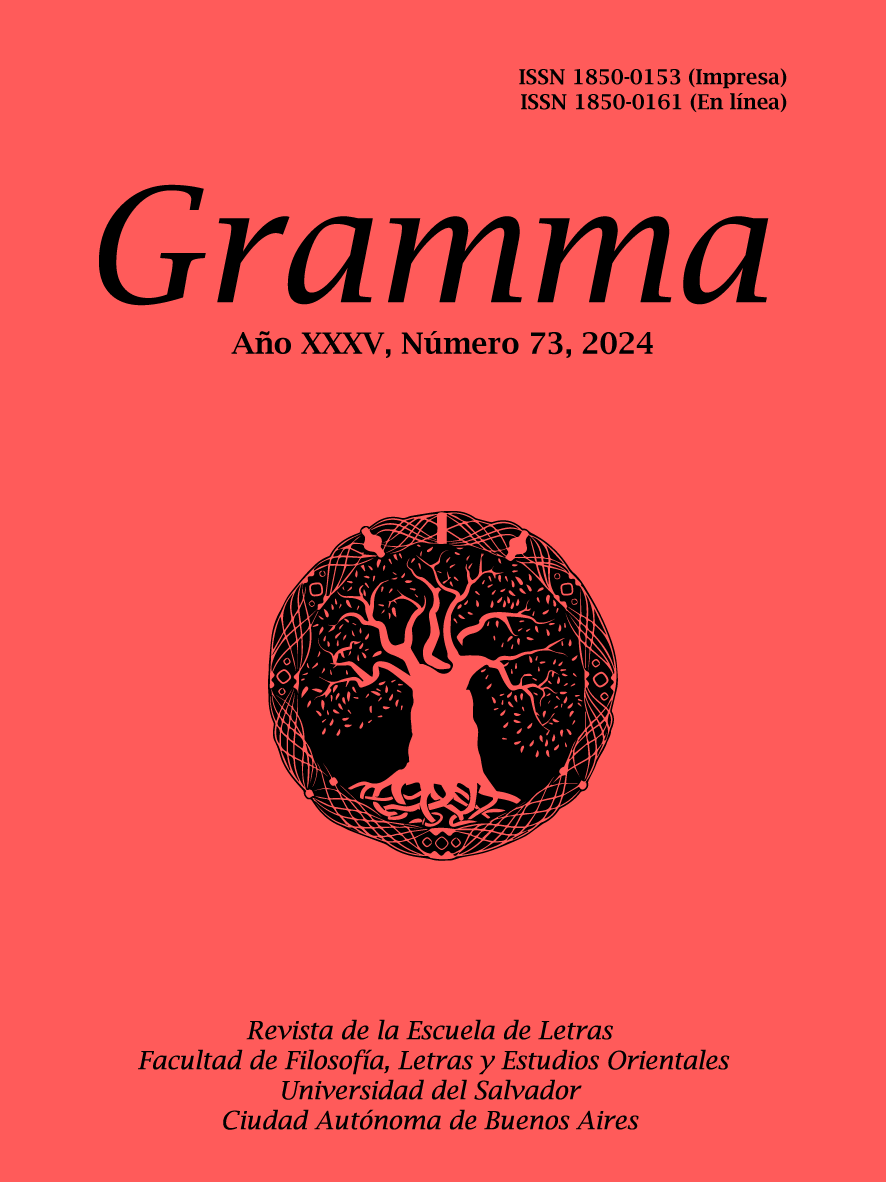Lessons of resilience in recent Latin American narrative written by women
Keywords:
Latin American narrative, women, writers, resilience, gender, decolonialismAbstract
This study analyzes a corpus of recent Latin American narratives written by women, focusing on visuality and exploring them through the lens of resilience, incorporating gender studies, decolonialism, and ableism. The selected works include El cuerpo en que nací by Guadalupe Nettel, Sangre en el ojo by Lina Meruane, and Huaco Retrato by Gabriela Wiener. These narratives shed light on the discriminations and violences faced by the protagonists and highlight the resilience and resistance strategies that enable them to cope with and adapt to life's adversities. The study is divided into three sections: theoretical framework, development, and conclusions, aiming to find and analyze the resilience patterns within the works and their potential to impart valuable lessons to readers.References
American Psychological Association. (2011). El Camino a la Resiliencia. https://www.apa.org/topics/resilience/camino
Arantegui Gallardo, P. (2022). El principio del dolor: Un estudio comparativo en torno al dolor y la enfermedad en Clavícula de Marta Sanz y Sangre en el ojo de Lina Meruane. [Trabajo de Grado]. http://hdl.handle.net/10366/151324
Bal, M. (2021). Figuraciones. Cómo la literatura crea imágenes. Ediciones de la Universidad de Murcia.
Bauman, Z. (2000). Liquid modernity. Malden, MA y Polity Press.
Bidaseca, K. (2014). Los peregrinajes de los feminismos de color en el pensamiento de María Lugones. Revista Estudos Feministas, 22(3), 953-964. https://www.redalyc.org/pdf/381/38132698014.pdf
Cixous, H. y Derrida, J. (2001). Velos. Stanford University Press.
Cyrulnik, B. (2001). La maravilla del dolor. El sentido de la resiliencia. Granica.
Cyrulnik, B. (2020). Escribí soles de noche. Literatura y resiliencia. Editorial Gedisa.
Granados Ospina, L. F., Alvarado Salgado, S. V., y Carmona Parra, J. A. (2016). Narrativas y resiliencia. Las historias de vida como mediación metodológica para reconstruir la existencia herida. CES Psicología, 10 (1), 1-20.
Freud, S. (1968). Psicoterapia de la histeria. En Obras Completas. Biblioteca Nueva.
Lugones, M. (2011). Hacia un feminismo descolonial. La manzana de la discordia, 2011, 6, 2, 105-119.
Lugones, M. (2013). Reconocer las superficies de nuestras hendiduras. Cartografiar el Sur de nuestros Feminismos [Panel]. Panel III. Interseccionalidad/Interculturalidad y conocimiento situado, en el Coloquio Internacional, Buenos Aires, IDAES/UNSAM.
Meruane, L. (2013). Sangre en el ojo. Random House.
Meruane, L. (2021). Zona ciega. Random House.
Nettel, G. (2011). El cuerpo en que nací. Editorial Anagrama.
Pascua Canelo, M. (2021). Ojos enfermos: Discapacidad, escritura y biopolítica en Halfon, Nettel y Meruane. Revista Letral, (26), 17-106.
Pascua Canelo, M. (2023). Las casi ciegas. Poéticas del ojo en la literatura hispánica escrita por mujeres (2010-2021). Universidad de Salamanca.
Sarlo, B. (2005). Tiempo pasado: cultura de la memoria y giro subjetivo: una discusión. Siglo XXI.
Spivak, G. C. (1998). ¿Puede hablar el sujeto subalterno? Orbis Tertius, 3 (6), 175-235. http://www.fuentesmemoria.fahce.unlp.edu.ar/art_revistas/pr.2732/p r.2732.pdf
Voionmaa, D. (2012). Con Sangre en el ojo: para una escritura de resistencia. Amerika, 7. https://doi.org/10.4000/amerika.3389
Wiener, G. (2021). Huaco retrato. Random House.
Downloads
Published
How to Cite
Issue
Section
License
Works published in this journal are licensed under a Creative Commons Attribution-NonCommercial-
Works published under this licence may be shared, copied and redistributed in any medium or format. Adaptation, remixing, transformation and creation are also authorised. Both sharing and adapting are permitted as long as credit is given to the work appropriately, providing a link to the licence and indicating whether changes have been made. Commercial use of the material is also not possible.








